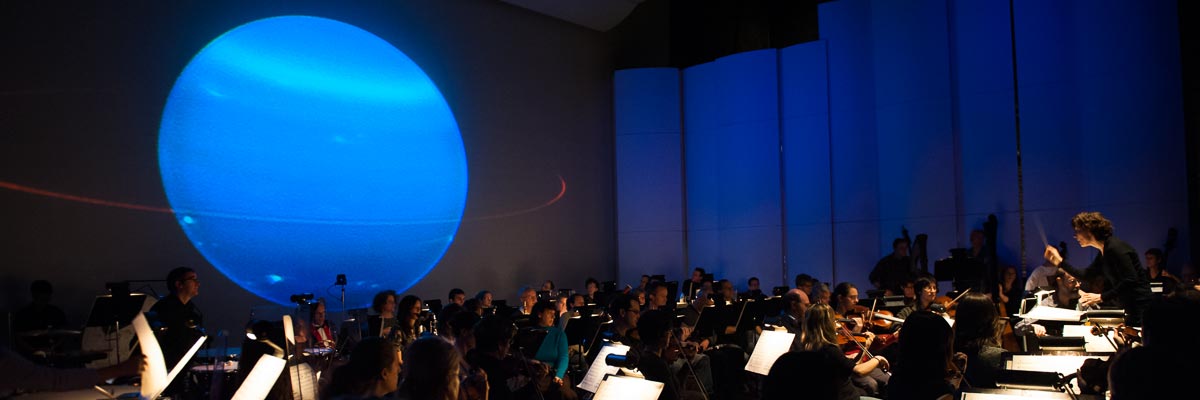
Science & Symphony Films
The Science & Symphony project consists of live performances of classical music works accompanied by high-definition science films produced specifically for these music works. By partnering with symphony orchestras, scientific and educational institutions, this project connects disciplines such as astronomy, photography, and music to increase the understanding and appreciation of these uniquely human endeavors, and open them to ever-broader international audiences. As of early 2023, these films have reached more than 480,000 people in concert and lecture halls spanning more than 100 cities in 21 countries.
The films feature images, animations, and science visualizations from NASA, the European Space Agency (ESA), the National Center for Supercomputing Applications (NCSA), as well as historical illustrations. They follow the tempo and tone set by the music, and are intended to be art pieces that aim to inspire audiences and encourage them to learn more about the music and the universe. All performances also include a lecture about the music and science behind the films, and the creative process involved in creating them.
Major Works
- Gustav Holst's The Planets (Holst)
- The Universe at an Exhibition (Mussorgsky, arr. Ravel)
- Moonrise (Ravel's Daphnis and Chloe)
- A la busca del más allá (In Search of the Beyond; Joaquín Rodrigo)
- Nocturnes (Debussy)
Collaborations with Contemporary Composers
- The Legend of the Northern Lights (Christopher Theofanidis)
- Aurora Triptych: Solaris, Borealis, & Wondrous Light (John Estacio)
- Moontides (John Estacio)
- Liquify (Michael Abels)
Short Works
- Clair de lune (Debussy, arr. Luck)
- Around the Earth in 90 Minutes (Un bal/Berlioz)
- Over the Beautiful Blue Planet (Blue Danube/J Strauss II)
- Introduction from Also sprach Zarathustra (R Strauss)
- Carol of the Lights (The Adoration of the Magi/O. Respighi)
Youth Concerts
The Science & Symphony films are presented in Youth Concerts where the music director talks about the music being played and astronomer and filmmaker Dr. José Francisco Salgado talks science concepts featured in the film, the use of scientific visualization, and the creative process involved in the production of the films. The concerts are not only very popular with students but also with educators since they cover many disciplines in one single program. Students are also encouraged to ask questions about science and the pursuit of science careers.
Science & Symphony Lectures
The Science & Symphony films are also presented as stand-alone works in lectures, workshops, and educational outreach activities (in English and/or Spanish) at museums, colleges, schools and other educational and scientific institutions.
Lectures
- Communicating Science through Art and Technology
- Photography at the Intersection of Science and Art
- Science, Symphony, and Auroras